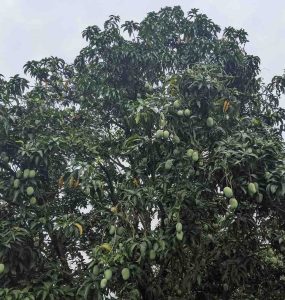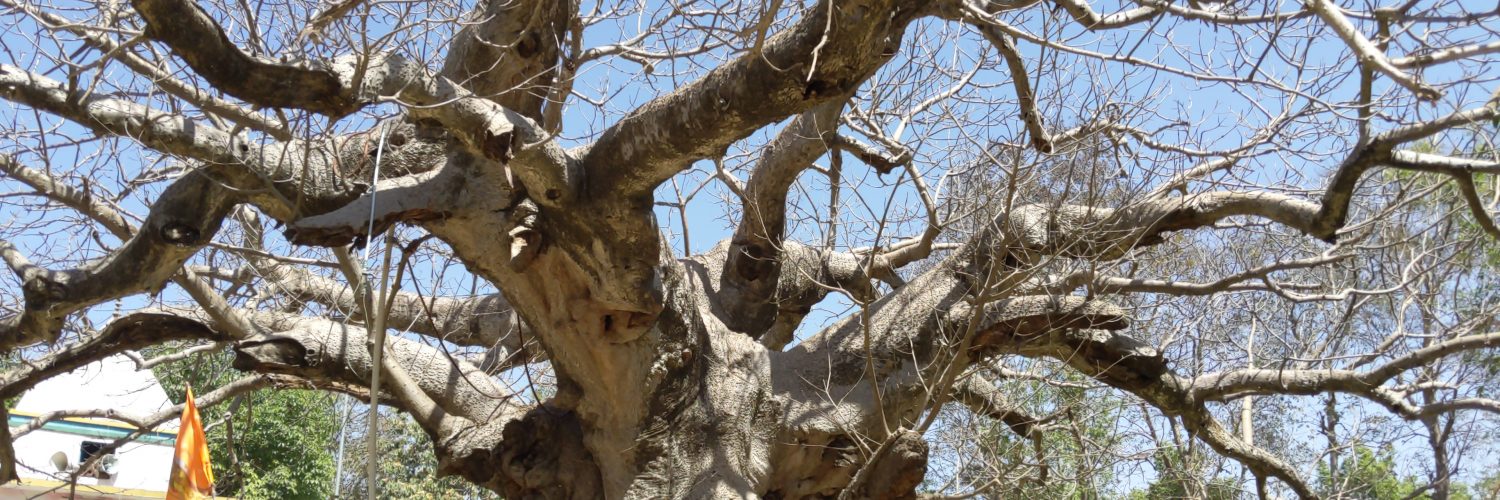In India, tree worship is associated for thousands of years, whether in form of cultural rituals or festivals. Myriad plants and trees in India have historical and religious significance. In addition, plants and parts of trees were extensively used for their health and medicinal reasons as well.
The practice has not only helped in increasing respect for nature but has also contributed to environmental protection.
Peepal Tree

Scientific name: Ficus religiosa
The peepal tree is one of the most worshipped trees in India and is considered auspicious in all the Indic religions, Hinduism, Jainism, and Buddhism. It is popularly known as the ‘Bodhi Tree’ as Gautam Buddha attained enlightenment under this deciduous tree.
In Hinduism, the peepal tree represents the three supreme gods – Brahma, Vishnu, and Shiva. The roots represent Brahma, the trunk represents Vishnu and the leaves of the tree represent Shiva.
It is a common sight in India to find a red thread or cloth tied around Peepal trees as a practice worship. This ritual prevents people from cutting down trees.
Banyan Tree
Scientific name: Ficus bengalensis
The Banyan Tree also known as Bargad in India, is among the most sacred trees in India. The tree is believed to provide the realization of wishes and provide material gains. In most Hindu cultures, this tree represents life and fertility.
It is also generally said to be the humble abode of Lord Krishna. Banyan trees are always found either near a temple or there is a shrine below the tree itself.
It is also India’s national tree and has large foliage that provides a vast field of shade.
Bael Tree
Scientific name: Aegle marmelos
Bael Tree is a very sacred tree of India and is associated with Lord Shiva. The bael leaves are offered to Shiva and religious ceremonies are considered incomplete if the Bael leaves and fruits are not offered to him.
Ashoka Tree
Scientific Name: Saraca indica
Ashoka Tree is one of the most important trees for Hindus. The tree is associated with Lord Indra. Ashoka means without grief or one which gives no grief. In Vamana Purana, the use of the flowers of Ashoka is recommended for revering and therefore you can find worshipers offering its flowers in temple decoration.
The tree is also a symbol of love and is dedicated to Kamadeva who is supposed to have used the flowers as one of the five arrows in his quiver. The tree is regarded as a guardian of females and the belief comes from Ramayana.
As per the epic Ramayana, when Ravana abducted Sita and forcibly kept her in Lanka for a long time. She spent that time in a grove of Ashoka trees and remained safe.
Mango Tree
Scientific Name: Mangifera indica
Mango Trees are not only famous for their delicious fruits, but its significance is much more. The leaves and fruits of the sacred mango tree are used in many religious ceremonies in India. The Mango tree has been cited in the epics like Ramayana, Mahabharata, and even in the Puranas. The fruit of the mango tree is an emblem of purity, love, and fertility
During festivals and other important occasions, leaves of the mango tree are hung by a string on home entrances expressing the auspiciousness of any occasion.

Neem Tree
Scientific Name: Azadirachta indica
The Neem tree is one of the most respected trees in India, due to its numerous benefits. Neem has medicinal properties and is used to treat many diseases. It is also associated with the Goddess Durga and many people believe that neem trees help in keeping evil spirits at bay.
Banana Tree
The Banana tree is used in many religious ceremonies and erected in front of the gates to welcome guests. The leaves are hung near the entrance to mark an auspicious occasion and are also used as plates to give prasad.
The fruit of the banana tree is offered to gods and goddesses, particularly Lord Ganesha and Lord Vishnu.
Coconut Tree
Scientific Name: Cocos nucifera
The Coconut tree is one of the most sacred trees, especially in South India. In the coastal areas of India, many families plant coconut trees in their houses.
Coconut is used in many religious ceremonies of the Hindus and the fruit is often offered in temples and spiritual places. There is a common practice to break the hard shell of coconut with force during religious ceremonies.
The Coconut is also kept on the top of a water pot along with Mango leaves, together known as Kalash, in many festivals and religious ceremonies like marriages, housewarmings, etc.
Other Trees that have Religious significance
The Sandalwood Tree (scientific name: santalum album) is also considered among the sacred trees of India. The paste from its fragrant wood is considered very divine. Many people apply the sandalwood paste on their foreheads which is also used to worship Lord Vishnu and Shiva.
Then there Kadamb Tree (scientific name: Anthocephalus Cadamba), which is associated with Lord Krishna, as he used to play his flute under the tree. All the activities in his childhood were done near this tree. The Kadamb tree is a favorite among many gods and goddesses. Goddess Durga is believed to reside in the Kadamba forest.
Champa Tree is a dazzling and sweetly scented yellow flower, used in religious ceremonies and worship of gods. It is considered to be sacred to Lord Krishna. It is believed to be a part of one of the five darts of flowers of Kama deva.
Then Rudraksha (seeds of Elaeccarpus) is considered special to Lord Shiva and is worn by many devotees for its powers.
Parijat Tree in Uttar Pradesh
There is a tree in the Indian state of Uttar Pradesh, that as per the legends has a connection with Mahabharta. The tree is extremely unique and is believed to be 5000 years old. The scientific evidence has found it to be about 1000 years old, still making it one of the oldest trees in India
As per legends, the Parijat tree is among the sacred trees of India as it emerged during the churning of the ocean (Samudra Manthan) and was taken to heaven by Lord Indra. This tree is believed to have been brought from heaven by Lord Krishna, therefore it is respected by millions of people.
You can watch this video about the tree or you can also read a detailed story from Change Started.
Festivals that are associated with Trees and Plants
Vat Savitri (around May and June period) is celebrated for Banyan Tree.
Amla Navmi (around October and November period) celebrates Amla (Gooseberry Tree).
Tulsi Vivah is celebrated after Diwali (around October and November period) to pay reverence to the Tulsi plant. Read More about this festival, here.
Nimb Saptami and Sheetala Ashtami (around March and April) are associated with Neem Tree.
Somvari Amavasya which is observed on every full moon day is associated with Peepal Tree.






Add comment